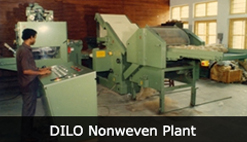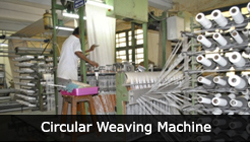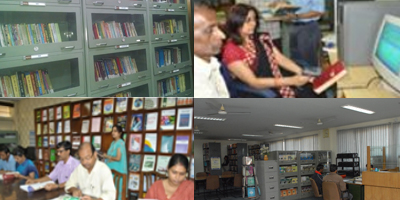













NIRJAFT is engaged in research on post harvest technology of jute and allied fibres (mesta, sisal, sunhemp, pineapple, ramie, coir, banana, etc.). Development/ modification of new technologies and problems solving of industries is being done efficiently.


The institute is actively engaged in rendering consultancy services to the entrepreneurs and industry for technical knowhow, preparing project report and other technical assistance.
The institute conducts various field demonstrations and trainings on retting, grading, yarn/ fabric preparation, processing/ finishing, products of jute and allied fibres for popularization, awareness and transfer of field worthy technologies.
New entrepreneurs are trained on NIRJAFT technologies for their skill development. The Institute also having an incubation centre for incubate regarding different technologies developed by the institute.
The laboratories of the institute are well equipped with wide range of sophisticated instruments and equipments for physical and chemical analysis. This infrastructure can be extended for the outside organizations for testing their samples on payment basis.
The NIRJAFT library is one of the glorious and prestigious library in the ICAR. Documents are available since 1938. Total Nos. books 19,700 (text books, monographs, reference books and standards are available in the relevant subjects). Library subscribes 56 Nos. Indian and 14 Nos.
Foreign journals, World textile abstract+ On-Line is available since 2011 (hard copies available from 1969 to 2010) and Journal of industrial textile+ On-Line. We are the member of CeRA. Library renders photocopy services, current awareness services and abstracting services. Different scholars & researchers from different universities, institutes and research organizations very often use our library.

A well furnished official guest house is attached with this institute for staying the guests of NIRJAFT, ICAR personnel and others. Hostel can also be provided to the trainees of NIRJAFT.
| Sl. | Name Of The Facility | No. Of Rooms | No. Of Beds |
|---|---|---|---|
| 1. | Scientists’ Home | 04 | 08 |
| 2. | Scientists’ Annex | 04 | 08 |
| 3. | Training Hostel | 10 | 20 |
| 3. | Farmers’ Hostel | 09 | 18 |
The institute auditorium, meeting room and two conference rooms are well equipped with modern audio and video facilities. This can also be provided in non institutional purposes on payment basis.
| Sl. | Name of the Facility | Sitting capacity |
|---|---|---|
| 1. | Auditorium | 100 persons |
| 2. | Meeting Room | 20 persons |
| 3. | BPD Hall | 50 persons |
| 4. | Committee Room | 30 persons |
Scientists of this institute are also involved in academic assignments with different universities and institutes. University students are also entertained to upgrade their knowledge by interaction with scientists, performing project works and using library.
NIRJAFT is assigned for quality & processibility evaluation of fibres under All India Network Project of Jute. Quality & processibility certification for new variety release is also given.